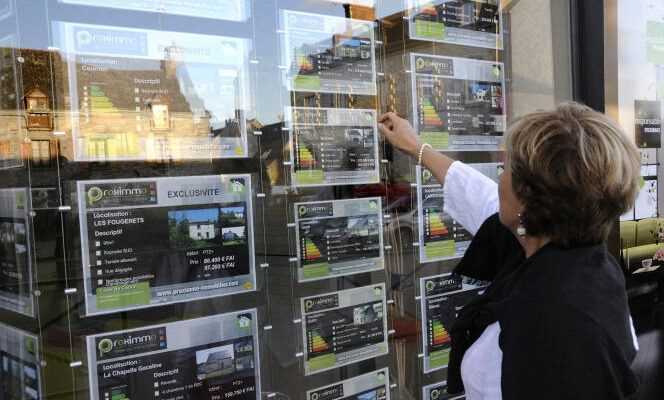The Climate and resilience law of August 22 declares war on the nearly 5 million thermal strainers in France, in other words energy-intensive housing, and has provided for significant legal effects in the event of a poor rating in the energy performance diagnosis (DPE). Categories A and B – the best – only concern new or recent dwellings, the D rating is the median and the most widespread since it is attributed to 40% of the stock. As for E, F and G, they designate “thermal strainers”.
From the 1er August 2022, the owners of buildings classified as G, if they are rented, will no longer be able to increase the rent and, from 2025, offer them for rent; for housing classified F, the ax of the ban will fall in 2028; for E, in 2034. The sale of goods classified F and G must, for its part, be accompanied by an energy audit from 2022.
Will these new measures change the value of goods? “When it was created in 2006, the DPE seemed anecdotal, some professionals even finding it curious to label a house as a fridge”, recalled Me Frédéric Violeau, notary in Caen, on the occasion of a communication to the Circle of real estate managers, on November 16. But today, we are changing gear and the latest study on “green value”, as the impact of DPE on housing prices is called, shows price differences approaching 30% between two apartments of same type, one noted F or G, the other A or B. “ ” The difference is more marked for houses than for apartments, and in cold areas ”, he specified.
Notaries, in a study published in October 2021 on transactions carried out in 2020, recorded 7% of sales in categories A and B, 19% in C, 39% in D, 24% in E and 11% in F and G. According to them, a house located, for example, in the Grand-Est region or in Bourgogne-Franche-Comté and classified F or G, is worth 12% less than a house labeled D, while, classified A or B it is worth 11% more.
In tight areas, where the cost of real estate is high, the impact of this green value is, on the other hand, much lower. Thus, in Ile-de-France, the price of poorly rated accommodation (F or G) is only 2% lower than that of category D and those rated A or B are only 6% higher. In Provence-Alpes-Côte d’Azur, apartments with label A or B sell for the same price as D, while F and G are discounted by 11%.
Doubt about the reliability of the system
You have 49.46% of this article to read. The rest is for subscribers only.
